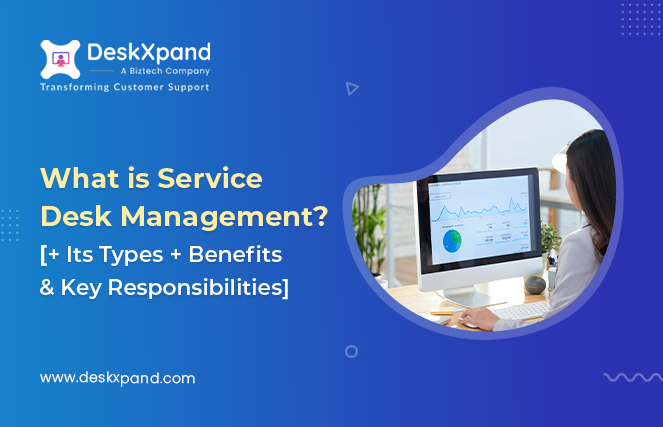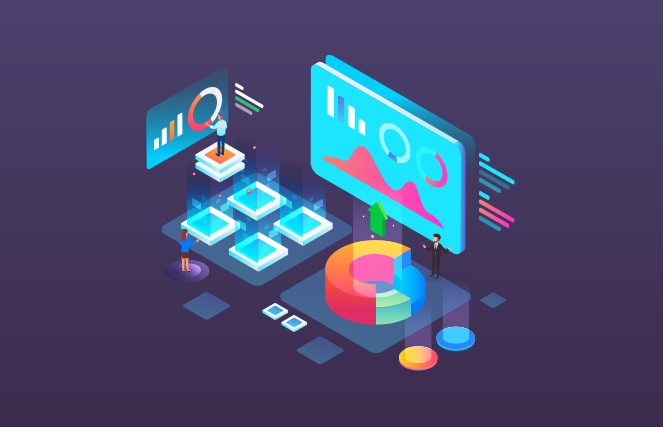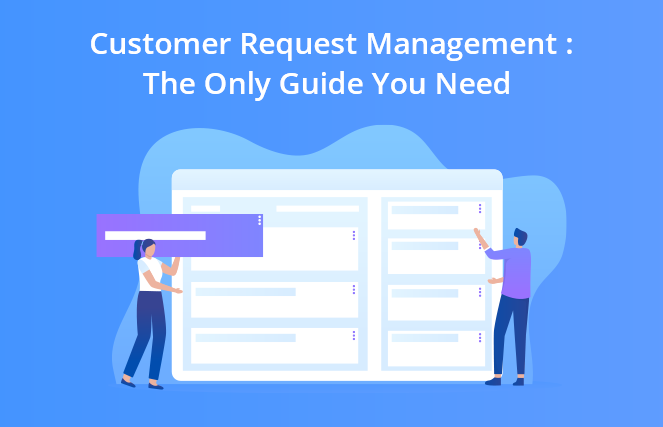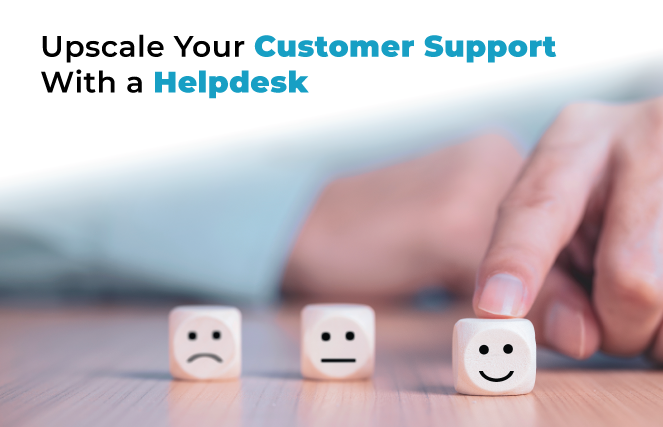Introduction
Twitter aims at empowering users to create and share ideas and information instantly. But internally, at some point in time, at Twitter, the employee communication with the IT team was anything but instant. Alex Stilling, the IT manager, calls this issue “the Black Hole.” Twitter’s internal IT team faced an overwhelming flood of requests when it grew from 900 to 3,600 employees in just two years.
Their small IT team handled about 25,000 tickets, i.e., approximately two thousand tickets per agent in one year. The company needed to provide a satisfactory experience to employees when incoming tickets were growing like crazy. On top of all this, Twitter was using email for internal service requests. Ergo, they had no automated system to track, manage, or route requests to relevant agents. Agents and employees constantly had to communicate multiple times to clarify an issue before addressing the problem.
Twitter then went ahead and adopted intuitive service desk management and was delighted with the immediate results. A simple, easy-to-use interface helped them reduce their emails. With requests coming through a service desk management, tickets had all the correct information, went to the right flows, and were routed to the right people.

There was a dramatic dip in the email inquiries. Previously we were doing 95% email support. Now it’s only 15%.
Alex Stilling

They saw a substantial reduction in email support requests. Besides, Twitter’s internal IT team deflects several tickets by surfacing knowledge base articles tagged with relevant keywords.
This is a win-win situation as employees could solve their problems with the help of self-service.
Twitter quickly recognized the loopholes in its service desk workflows, and it benefited from adopting a service desk management solution. After recognizing the benefits of adopting service desk management, now more than a hundred teams at Twitter, including human resources, procurement, and facilities, have started using service desk management software. Here’s a guide for anyone who wishes to revamp or build their service desk management process. So, what is service desk management, and how exactly does it help you optimize your service processes? Let’s find out! We’ll talk about:
What is Service Desk Management?
Service Desk Management refers to the practice of managing and supporting an organization’s IT service desk or help desk operations. It involves overseeing the processes, resources, and activities required to efficiently and effectively support end-users or customers.
The service desk is a central point of contact for users who require assistance or encounter issues with IT services, applications, or hardware. Service Desk Management encompasses various responsibilities, including incident management, problem management, request fulfillment, and user communication.
Types of Service Desk Software
I. Centralized Service Desk
A Centralized Service Desk is a model in which an organization consolidates its support functions into a centralized location or team responsible for handling all user inquiries, incidents, and requests. In this model, all communication and support activities are funneled through a central point of contact.
II. Local Service Desk
A Local Service Desk refers to a support model where multiple localized service desks are established within an organization, typically in different geographical locations or business units. Each local service desk is responsible for providing support to users within their specific area or department.
III. Virtual Service Desk
A Virtual Service Desk is a support model in which the service desk functions are performed remotely, without a physical presence at the user’s location or within a specific office or department. It leverages technology and Virtual communication channels to provide support to users regardless of their geographical location.
6 Benefits of the Service Desk Management Software
1. Efficient Issue Resolution
Service desk management software plays a crucial role in helping organizations resolve queries efficiently by providing a centralized platform to manage and streamline the support process. First, it serves as a single point of contact for users, allowing them to submit queries, incidents, or service requests through various channels such as email, chat, or self-service portals. The software captures and tracks these queries, ensuring none are overlooked or lost.
Additionally, service desk software often includes automation features that can categorize and prioritize queries based on their urgency or impact, ensuring prompt attention to critical issues. It also enables support staff to access a comprehensive knowledge base containing troubleshooting guides, FAQs, and known solutions, enabling faster resolution times. Service desk software also offers collaboration and communication among support team members, allowing for efficient escalation, information sharing, etc., for complex queries.
2. Data-driven decisions
Service desk software can greatly assist organizations in making data-driven decisions by providing valuable insights via analytics and reporting. Through the analysis of data, service desk software can generate various reports and metrics that provide visibility into the performance of the support team and the overall state of IT services. These reports can include information on ticket volume, response times, resolution rates, customer satisfaction levels, and more. By analyzing this data, organizations can identify patterns, trends, and areas for improvement.
For example, they can identify common issues or recurring problems, enabling them to prioritize efforts in problem management and implement proactive measures to prevent future incidents. Data from the service desk software can also help in resource allocation, such as identifying areas with high support demand or loopholes in the resolution process. Additionally, organizations can leverage the data to set and monitor key performance indicators (KPIs) and service level agreements (SLAs), ensuring that support operations align with business objectives.
3. SLA Compliance
Service desk software enables organizations to set, monitor, and manage SLAs effectively. By defining SLA parameters within the service desk software, such as response times, resolution targets, and priority levels, organizations can ensure that the support team is aware of the specific requirements for each service request or incident. The software helps track the progress of tickets, providing real-time visibility into SLA compliance.
Notifications and escalations can be set up within the software to alert support staff when SLA thresholds are at risk of being breached. Additionally, with the help of reporting and analytics capabilities that generate SLA performance reports, organizations can assess their compliance levels and identify areas for improvement. By utilizing service desk software to monitor and manage SLA compliance, organizations can deliver services in accordance with agreed-upon standards and uphold their contractual commitments.
4. Centralized Knowledge Base
Service desk software provides a platform to capture, store, organize, and share knowledge resources within the organization. Support staff can document solutions, troubleshooting steps, best practices, and other relevant information directly within the service desk software. This knowledge can be categorized, tagged, and indexed for easy search and retrieval. As support staff handles incidents and requests, they can leverage the knowledge base to find relevant articles and solutions, accelerating the resolution process.
Furthermore, service desk software often includes collaboration features that enable team members to contribute, review, and update knowledge articles collaboratively. This promotes knowledge sharing and ensures that the knowledge base remains updated with the latest information. Over time, the centralized knowledge base becomes a valuable resource for the entire organization, helping to streamline support operations, improve first-call resolution rates, and empower users with self-service options.
5. Effective Incident Management
Service desk management software provides a structured framework for incident management, ensuring that critical incidents are promptly identified, prioritized, and addressed. Through the software, organizations can establish predefined workflows and escalation processes that guide support staff in handling critical incidents. When a critical incident is reported, the service desk software automatically triggers notifications to the support department, ensuring that the incident receives immediate attention from the appropriate teams.
The software also helps the support staff to efficiently communicate and collaborate, enabling them to quickly coordinate efforts, share updates, and escalate issues as necessary. Additionally, with the help of reporting and analytics features, they can get insights into the incident trends, enabling organizations to proactively identify potential incidents and take preventive measures.
6. Integration Capabilities
Integration capabilities allow the service desk software to connect with various other systems and tools used within the organization. For instance, integration with asset management systems enables the service desk software to access information about hardware and software assets, facilitating efficient incident resolution. Integration with monitoring tools allows the service desk to receive real-time alerts and notifications about system issues, enabling proactive incident management.
Integration with knowledge management platforms facilitates the synchronization of knowledge articles, ensuring that the service desk software can access the most up-to-date information. Furthermore, integration with communication and collaboration tools streamlines the flow of information. Integration capabilities allow the service desk software to align support activities with customer information and history. Ultimately, service desk software’s integration capabilities enhance productivity, improve data accuracy, and enable seamless collaboration across systems.
6 Key Responsibilities of Service Desk Management System
1. Managing and Resolving Complaints
Service desk management software serves as a central hub for capturing, tracking, and addressing customer complaints efficiently. It allows support staff to record and categorize complaints, ensuring they are properly documented and assigned for resolution. The software provides transparency and visibility into complaint status, enabling support teams to prioritize and address them promptly.
By managing complaints through the service desk software, organizations can systematically analyze and identify recurring issues, enabling them to take proactive measures to address root causes and improve service quality. Furthermore, the software allows for documenting and storing complaint resolutions, which can serve as a knowledge base for future reference and continuous improvement.
2. Ensuring that Omnichannel Support is Offered
Service desk software enables organizations to provide seamless support across multiple channels, including phone, email, chat, social media, and self-service portals. This capability is crucial because customers expect the flexibility to engage with support teams through their preferred channels. Service desk software consolidates and integrates these various communication channels, allowing support staff to efficiently manage and respond to customer inquiries and issues.
Organizations can provide a consistent and personalized customer experience by offering omnichannel support, regardless of the channel used. Moreover, service desk software captures interactions from different channels, providing customer communication history and promoting continuity in the support process. This approach enhances customer satisfaction, improves response times, and builds stronger customer relationships.
3. Analyzing and Improving the Team Performance
Analyzing and improving team performance is a key responsibility of service desk management software because it allows organizations to optimize their support operations and deliver exceptional customer service. It provides valuable insights into team performance through metrics, reports, and analytics. It enables organizations to track and measure key performance indicators (KPIs) such as response times, resolution rates, customer satisfaction scores, and backlog management.
By analyzing these performance metrics, organizations can identify areas of improvement, set benchmarks, and establish performance goals for the support team. Service desk software also offers identifying trends and patterns in support requests, enabling organizations to proactively address recurring issues and optimize workflows. Organizations can drive continuous improvement and enhance productivity by leveraging service desk software to analyze and improve team performance.
4. Enabling Self-service Options to Empower Employees
Service desk software provides a platform for organizations to offer self-service portals, knowledge bases, and automated workflows that allow employees to find answers to common issues and perform certain tasks independently. By providing a self-service option, employees can access information and resources at their convenience without having to rely on direct support from the service desk team.
This not only saves time for both employees and support staff but also creates a sense of empowerment and ownership. Additionally, self-service options reduce the workload on the service desk, allowing support staff to focus on more complex or critical issues. By leveraging service desk software to enable self-service, organizations create a culture of self-reliance, improve employee satisfaction, and drive operational efficiency.
5. Enabling Smooth Employee Onboarding
Service desk management software allows organizations to establish streamlined processes for new employee onboarding, ensuring that IT resources, access permissions, and necessary software or hardware are provisioned efficiently. IT teams can automate the onboarding process by utilizing the software and creating standardized workflows and templates that guide them through each step. This reduces manual effort and minimizes the risk of errors or delays.
Service desk software also enables clear communication channels between IT and new employees, facilitating the resolution of any technical issues or inquiries that may arise during the onboarding process. Hence, by enabling smooth employee onboarding through service desk software, organizations enhance the overall employee experience and set the stage for a successful journey in the company.
6. Monitoring Reports and Metrics for Enhanced Results
Service desk software generates comprehensive reports and metrics that provide visibility into key performance indicators (KPIs). By monitoring the reports and metrics, organizations can identify trends, patterns, and areas for improvement. They can track the support team’s performance, identify loopholes, and make informed decisions to optimize resource allocation, streamline processes, and enhance service delivery.
Moreover, service desk software enables organizations to set benchmarks, monitor progress toward goals and create continuous improvement initiatives. The ability to monitor reports and metrics empowers organizations to proactively address issues, make informed decisions, and ultimately drive enhanced results in terms of efficiency, customer satisfaction, and overall service quality.
4 Strategies to Maximize Service Desk Efficiency
How do you know if your IT help desk’s performance is lacking or just an issue with your tech that is hindering you from reaching your weekly goals? As an admin manager, you must act quickly, decisively, and positively.
With a few tweaks in your workflows and the right plan, your team can begin to see improvement quickly. Here are four ways to help you maximize your service desk productivity and efficiency.
1. Collect the Right Metrics
Everything depends on the type of data you collect. Collecting and analyzing data comes into the picture when you cannot find out the problems with your service flow.
You need to keep an eye on everything. You need to determine if there is a drop in your service levels, your customer satisfaction rating has plummeted, your resolution time is dragging out, or your hold times are creeping upwards. In-depth analytics will help you find out the problem from its core. It will also help you find out agent performance and help them if they lag behind.
Things could be less intense than you thought, or they could be worse than you expected, but it’s a good idea to know exactly where you stand. This way, you can map out a way quickly.
2. Establish Clear Goals
Planning and strategizing clear goals is yet another strategy to maximize service desk efficiency. It is said that “when it comes to customer service, haste makes waste.” Building a deliberate, detail-oriented strategy will go a long way in meeting the needs of your customers.
While framing the strategies, make sure you keep in mind the “SMART goals” approach:

Once you have metrics in hand, you need to draft goals for where performance should be. Design workflows that enable collaboration between your support employees. The collaboration will bring a loyal customer base and engage employees too. As a manager, you must continuously strive to discover any unmet needs. It would help if you also made sure that your goals and strategies ease your agent’s job.
3. Gather the Right Performance Feedback
Consider gathering feedback from your employees and tracking their performances. Use this information to address specific issues that get mentioned but it can also be used to boost morale. You can try out different customer satisfaction surveys with multilevel responses.
Let your team know when and where they’re doing a good job. You will also need to follow up on the negative experiences to learn where service can improve.
4. Establish Self-service Portal
When the incoming tickets go down, the satisfaction levels go up. And when you offer self-service portals or solutions, the incoming tickets will go down.
A self-service knowledge base with a good UI and UX is an ideal solution to empower users. Some benefits of self-service features include:
- Easily adaptable
- Customers will become self-reliant
- Quick and reliable solutions
- Support cost reduction
- Boosts social engagement
- Increases customer satisfaction & success
Best Practices for Choosing Service Desk Tools: Must-Have Features
Modern businesses must be more focused on providing a unique customer experience. Lately, the support has transitioned from in-person to remote, so customers rely heavily on digital service desk management teams for help.
Organizations are also leaning more towards robust tech solutions to keep their customers connected. They need enhanced service desks to overcome these challenges. But, what makes a suitable service desk? What are the best practices for choosing a service desk tool? Let’s find out.
1. Omnichannel Features
Omnichannel simply means providing multiple channels so that customers can reach out to you at their convenience. Admins and support agents must be able to manage all these channels through a single interface. Some channels that you can provide are:
- Phone support
- Knowledge base
- Email support
- Support through social media (Facebook, Twitter, etc.)
- FAQs
Let customers engage across channels of their choice, and you can manage multiple-channel support from one unified interface with a robust omnichannel service desk.
2. Robust Ticket Management Features
Robust ticketing features are essential to managing the ticketing workflow. These features include:
- Automatic ticket registration and creation
- Auto-assignment to a relevant agent
- Auto-notifiers to keep the customers involved
- Defining SLA based on priority
- Collision Detection
Your service desk must register complaints and automatically convert queries in the form of tickets. After acknowledging, service desks must allow you to send an email or notification to your customers stating the same.
3. Collaborative Features
Collaborative features such as a shared inbox improve the overall efficiency and team accountability of your service desks. Other features like bright ticket assignment based on various parameters, readymade responses, lifecycle tracking, fast ticket import, etc., are also essential collaborative features for service-desk management.
4. Self-Service Features
Service desks must always provide self-help options. Most of the time, employees are looking for a quick solution to a simple issue. In such a scenario going through the entire ticketing process would be a waste of time for agents and employees. Hence, a knowledge base comes into play.
A well-articulated knowledge base will help customers resolve issues on their own. It will decrease the burden on your support teams and agents. Your agents will only have to solve complicated issues rather than resolve the simpler and more repetitive issues. A knowledge base for internal team support can be a huge plus too.
5. Reports to Track End-to-end Issues
The customers and service desk teams must be able to track the status of an issue at a glance. Once you’ve resolved the issue, its data can be used to improve the support further. Some service desk analytics that you must track are:
- Average first-time response
- Average ticket resolution time
- Ticket incoming trends
- Ticket roadblocks
- Real-time ticket tracking
- Customer survey reports
- Ticket volume trends
- Track your ticket inflow
Companies can use the insights mentioned above to evaluate their customer support strategies for the future and get a 360-degree view of their support performances.
Upgrade Your Service Desk with DeskXpand
What if I tell you that there’s an enhanced service desk management system with the latest ticket automation features?
DeskXpand caters to all customer support needs from small to large businesses. Find out how you can update your service desks with DeskXpand. Here’s a brief feature overview:
- Smart ticket management
- Faster ticket import
- Collision detection
- Chat within the tickets
- Smart ticket assignment
- Canned responses
- Measure SLA performance
- Omnichannel features (email, FAQs, feedback forms)
- Shared Inbox
- To-do lists with integrated calendar
- Self-service (Knowledge base, FAQs, video tutorials)
- Customization
- Data tracking and analytics
The Bottomline
DeskXpand is built by professional developers with 16+ years of development experience. We are an ISO27001-certified service desk management software development company. We can help you build and customize products according to your present and future needs.
As an IT solutions and development company, we spend our time looking at the peaks and thresholds in data. We constantly strive to serve excellent experiences to our clients. Data helps us get to the bottom of what will enable us to serve a good experience. We focus on bringing out innovative solutions and not just solving problems.
Our teams experience growing pains as we constantly adapt to new challenges. Yours will too. The important part is that you have the right tools to measure your effectiveness and make the best decision to serve excellent customer service. Begin your free trial and explore our robust service desk management software.










